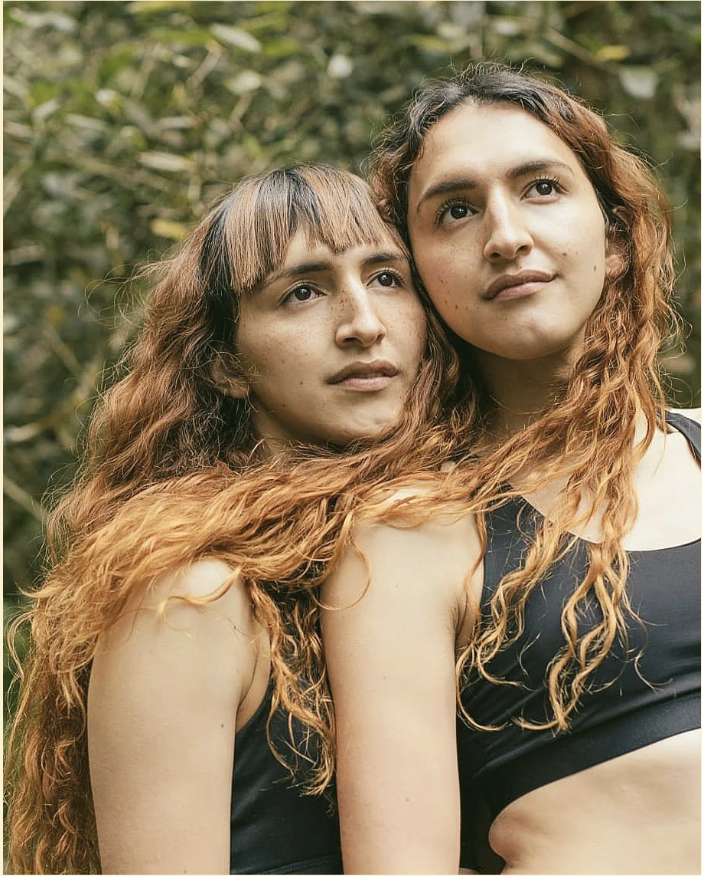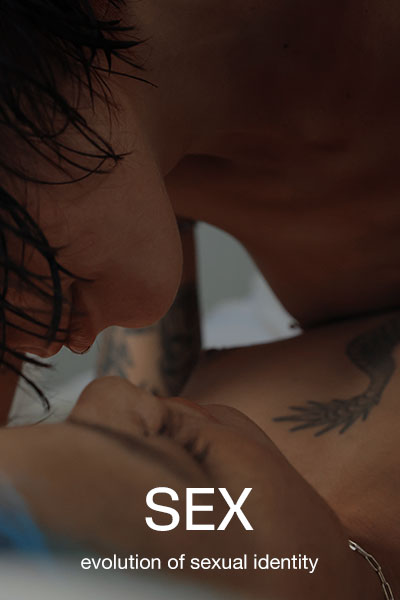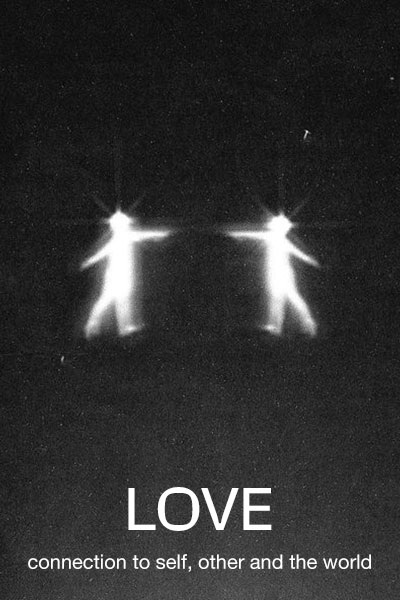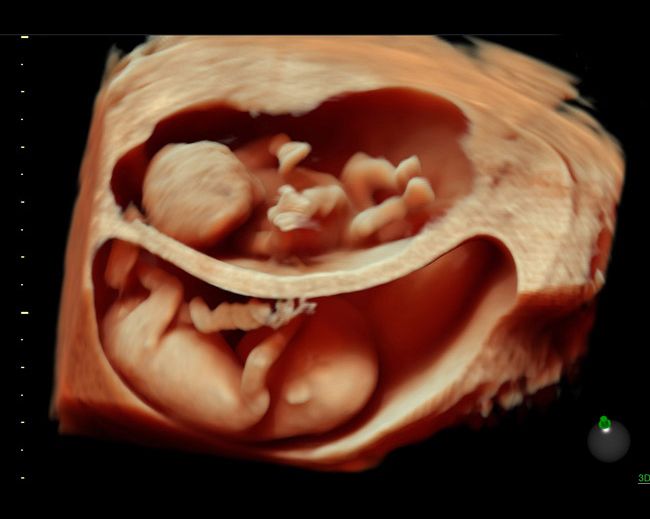Resemblance
We judge identical twins through the lens of sameness. It’s often detrimental to their identity.
Only three in every thousand pregnancies results in identical twins; the coupling, amazingly, share every last base of their DNA. As such, they’ve been a phenomenal barometer for assessing the impact of an environment on one’s development, the divergence between two otherwise identical individuals, purportedly, can only be explained by the randomness of the Universe. Identical twins can have phenomenal relationships just as they can have detrimentally codependent ones (one may recall the tragic story of identical twins who’d develop eating disorders, in a never-ending competition to appear thinner than their twin). Some say twins are prophetic: that what one does or becomes can be reasonably expected in the other. Sometimes there’s a competitive nature between them. Yet, there’s always a bond so inextricable that it can manifest in very powerful ways.
Having and growing up with an identical twin is a lot like holding a mirror up to yourself. But what happens when what’s staring back at you isn’t what you’d always envisioned?
That person that you felt tied to begins to feel distant – two identities perhaps diverging. Or perhaps that identity becomes something of a clarifier to your relationship with yourself, as though you’d used that “ESP” to be able to tell that they needed to tell you something important: that they aren’t living as their true selves. We often observe and judge twins through the expectation that they be exactly the same, which often stymies any individual development or divergence between the two.
This is the story of identical twins where either one, or both, is transgender or gender nonconforming. I sought out pairs of identical twins who might dispel the notion that people have about twins and their relationship to gender identity and sexuality, particularly the dubious notion that one twin being trans necessitates that the other be as well.
Questions of identical twins and sexuality have been studied ad infinitum, their conclusions hocked around as arguments both for and against genetics as the basis for one’s sexual orientation. Gender dysphoria in twins, however, is a more recent topic of anthropological inquiry. The most prominent study (and one of the only ones), is a 2022 paper in Scientific Reports on identical twins in Sweden, which found, interestingly, that the proportion of different-sex twins both presenting with dysphoria was higher than that in same-sex twins. Researchers then inferred that familial factors, particularly “shared environmental influences during the intrauterine period” influenced the development of gender dysphoria in twins. Though far from a conclusive, comprehensive study, the paper does point to a phenomenon which I would argue could teach a great deal to the general public on the immutability of being trans.

Empathetic examples of trans representation are few and far between, though in recent years the curiosity surrounding trans twins has spurred a Brazilian scripted series on the lives of identical twins Sofia and Mayla who undergo sexual reassignment surgery. Though the Wachowski sisters (who directed the Matrix franchise) are not twins, they are perhaps the most prominent example of siblings who are also trans women.
Embarking on the long and often arduous journey of gender affirming care is perhaps made a bit less lonely when shared with someone who either empathizes with your journey or seeks to chart out that path themselves.
The story is one in two parts: one pair of twins that hail from Colombia, both trans women, and another from Houston, Texas, one a trans man, and the other a cis lesbian woman. Both are stories of togetherness, of completing another person, and of reifying one’s identity through the unconditional support of another.

When Gabriela came out as a transgender woman, her sister followed only a month later.
GEMELAS ESPINOSA
When Gabriela came out as transgender, her sister followed only a month later. I begin with an apology. When Gabriela and Emma Espinosa agreed to speak with me, I feigned a rudimentary, conversational knowledge of Spanish, as they’re based in Colombia. I found them on Instagram, and was immediately intrigued by their careers as activists and models in their native Bogota – visions of confidence in a country marked by machismo. Even with the transcription I used to record our interview, I could tell there were intonations and expressions lost in translation during our forty minute conversation. Yet, in my struggle to fully ascertain their journey in a different language, the sisters were eager to tell their story.
Gabriela and Emma were born in Bogota, Colombia, and grew up at the turn of the century, a time of great economic progress in the city’s Colombia where the city’s heavily masculine, conservative culture failed to follow suit. Born to a conservative family, Gabriela and Emma knew few to no queer people in their native Bogota. Gabriela always knew there was something different about her, but didn’t express herself as a woman from a young age, her feelings of otherness instead manifesting in a deep depression.
I didn’t know what was happening in me… at that time, Emma and I weren’t that close
GABRIELA ESPINOSA
There was a great sadness she’d been carrying for many years in her youth, a momentary reprieve from which came in the form of a YouTuber named Victoria Volkova. Volkova is a trans woman and model based in Mexico, the first of which to model for both Victoria’s Secret and Playboy. When Gabriela was only 12, she would watch Volkova religiously as the young woman documented her transition, giving young Gabriela what seemed at the time a blueprint for growing into her true self. Initially, she came out as gay at 14, something her mother would eventually come around to accept. It was while she and her sister Emma were living apart at 21 – Gabriela in Bogota, Emma in Medellín – that Gabriela decided it was time to come out to her sister. Initially, it was quite difficult as they’d been apart six months, the longest they’d ever been separated.

When Gabriela first came out to Emma, it was a sobering and revelatory conversation. They’d always broached the topic as young kids, never fully realizing that they could have the resources or even a lexicon for a trans identity. Now, it was staring Emma right in the face. She came out to Gabriela a month later, and the two moved in together and began documenting their journey.
The two sisters are involved in the trans-feminist organization Memoria Trans, a collective of activists in Colombia providing resources to youths in need of life-saving services. The kind that Gabriela and Emma did not have.

CHRIS AND EMMA ROADES
Chris and Emma were born in San Antonio, Texas. They recall a suburban malaise that hung thick over their lives as, initially, two young queer twins, both of whom initially struggled to reckon with their identity in a humdrum town. Chris had, essentially, little to no interactions with queer people besides, “I guess, Ellen”, when he was in high school at the turn of the aughts. Queer and trans creators on YouTube and Tumblr were a major breakthrough for him, but he didn’t meet another trans person until he was 19.
I’d already come out to my sister as a lesbian. We’d come out to each other. Some time [later], I knew this other thing about myself, and I hadn’t even started transitioning yet
Chris Roades
At first, Chris admits that there was a bit of momentary tension between the two, with Emma questioning her own identity; if Chris was a trans man, did that mean that Emma was, too? It was a fair question; many twins grapple with their identities as they diverge from their counterparts. Many twins, like Emma, come to embrace and support their twin through this process of differentiation. The two became their own biggest allies and supporters.

Chris and Emma are close, even by identical twin standards. Amongst work as activists and artists, they run an apparel business together selling clothing often adorned with clever queer-isms that feel at once inclusive and universal. It’s something they fell into almost by accident, after realizing they had a knack for design and a desire to bring joy to their community. The two now live in Austin, Texas, and date partners who are close friends, themselves. In Austin, they’ve found an oasis of understanding in a notoriously unforgiving state, emboldened by their love for community activism and each other.
As an identical twin, one may have the double duty of supporting the person they’re closest to whilst also questioning and investigating their own identity.
Matt Herskowitz
When confronted with that concept, thing, or identity one fears most, many make a choice to soften to its existence, to become acquainted and perhaps identify with something that was once feared. As an identical twin, one may have the double duty of supporting the person they’re closest to whilst also questioning and investigating their own identity. They may need to separate to figure themselves out; this is what can make coming out as a twin so difficult. What’s missing in the national conversation around trans people is just how powerful familial relationships can be in expressing one’s true self. Centering narratives around trans people in supportive family relationships can dispel the notion that folks who come out as trans will inevitably see their familial bonds suffer. In fact, quite the opposite is true. While the story of trans twins may feel quite niche, it is nevertheless a topic as worthy of humanistic inquiry as any other. Through the Espinosa and Rhodes twins, we learn what it means to join someone on a journey, at times separating but always coming back again.





















